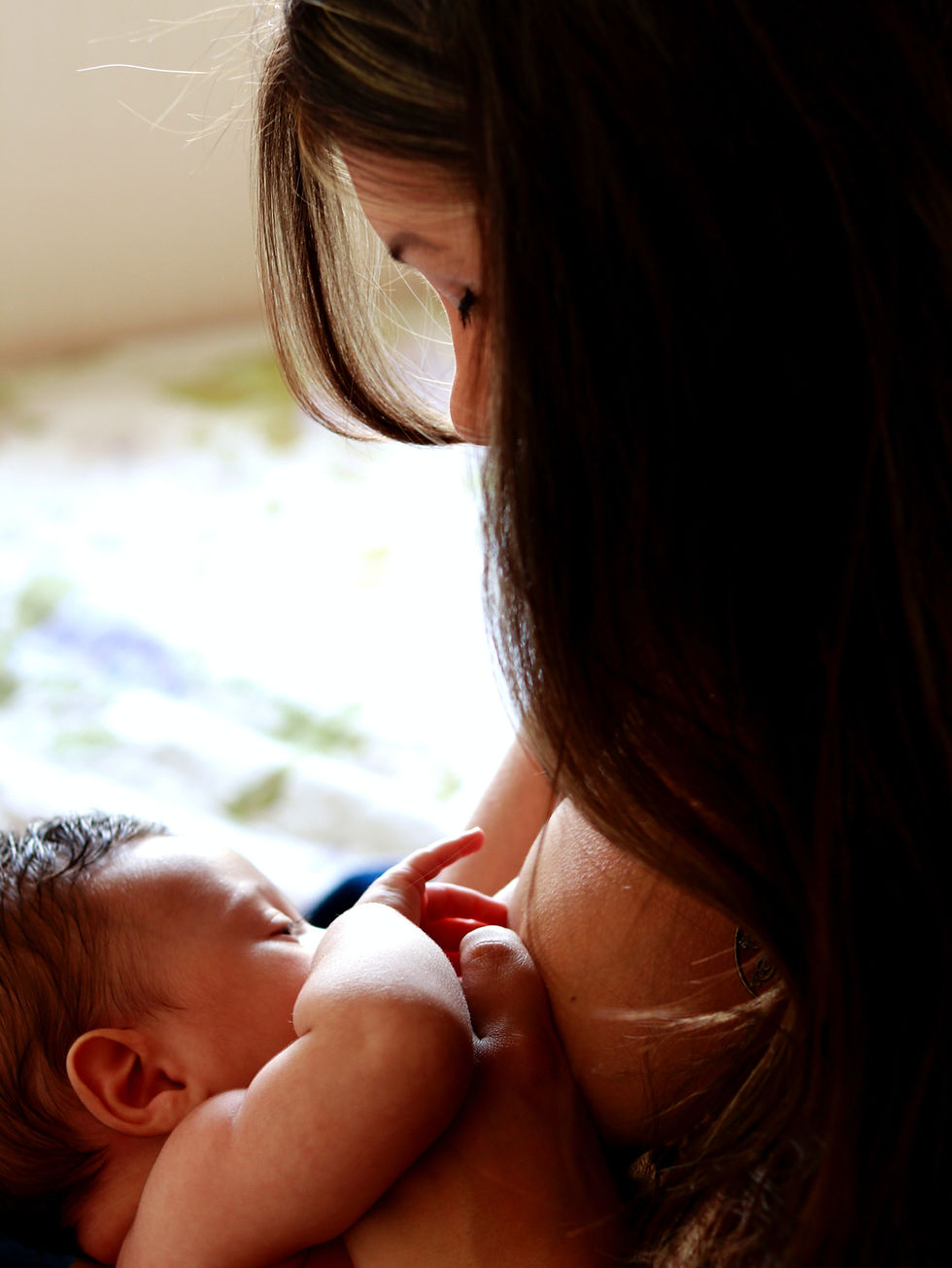Is My Baby Getting Enough to Milk?!
- Staci Berrey
- Jun 24, 2020
- 4 min read
Updated: Dec 16, 2020

Qualifying if your baby is getting enough when breastfeeding is one of the biggest concerns for new parents. When we are bottle-feeding this can be quite easy as everything is measured. However, unfortunately, we can't SEE how much milk is in our breasts or measure it, and therefore, we can not specifically know how much breast milk baby is actually taking in. It really is a leap of faith. You have to trust in your body and your baby.
As a lactation counselor helping parents trust this process is a large part of my work. Learning the signs to qualify if your baby is getting enough breastmilk is a BIG relief. When breastfeeding we must learn our baby intimately, understand their cues AND learn to trust our instincts.
Here are several ways to help you feel more secure in knowing that your baby IS getting enough:
1. OPEN/LOOSE HANDS = FULL TUMMY:
When your baby is really hungry they will ball up their hands and try to eat them! This is normal and natural. Closed tight fists!

As your baby nurses and their tummy fills, their hands will become loose and relaxed. You can see this in a progression. The more they nurse the looser their hand will get. Eventually they open completely and relax. Their arms will even go loose. They will appear completely satisfied and satiated. This is a major cue that your baby has received enough milk
2. SOFT BROW = FULL TUMMY: Just like their hands, your baby's brow will be furrowed and tense when hungry and anticipating food. As you nurse your baby this too will soften and relax. Again, a major clue that your baby has had enough is a soft and loose forehead.

3. ACTIVE FEEDING: it is imperative that you watch, listen and hear that your baby is actively feeding. This means that your baby's jaw is

moving and they are actively nursing. We want a pattern of suck/suck/swallow/pause for at least 5-10 minutes. We want to see this process and also hear many swallows. It sounds like a tiny (sometimes loud depending on baby) puff of air or even a little click. Some babies eat really fast while others may linger and nurse for 20+ minutes. As long as they are actively nursing we want them to go as long as possible.
4. 10-12 FEEDS IN 24 HOURS: keep track of how many times your baby feeds in a day, a

complete 24 hours. Newborns have one job and one job only; to put on weight. Their job is to eat and eat and eat so they can grow, grow, and grow! A nursing newborn baby should be feeding 10-12x in 24 hours. Some babies find a good schedule all on their own eating about every 2-3 hours and wake to nurse. Some babies will follow their own rhythm and cluster feed eating every hour or so. All this is okay as long as we are getting 10-12x in 24 hours. If your baby is really sleepy and NOT waking to feed and NOT getting 10-12x in 24 hours they could be calorically deprived and we must wake them to feed more often. Keeping track of feeds = peace of mind!
5. DIAPERS: what goes in must come out! In the early days of establishing your

breastfeeding relationship it is important to keep track of diapers. In the first few days you should have at least 2 wet diapers a day until your full milk comes in. Once your full milk comes in you should have 3-8+ diapers a day (wet and dirty). Keeping track of output is a good way to reassure yourself that your baby is getting what they need. Using an app like Baby Connect is a great way to keep all this information in order and in one place.
6. SOFTENING OF BREASTS: as you get closer to feeding, your body responds by producing what

your baby needs; MILK. It literally is supply and depend. The amount of milk you make is determined by how often your baby feeds and how much milk transfers out. When it gets closer to feeding time your breasts will become full. The longer you wait to feed your baby the fuller your breasts become. I am sure you have noticed this. To help qualify if your baby has received enough milk notice how your breasts feel when a feed is done. They should be softer and feel not as full as before. This helps give you a sense of how much your baby is drawing our of your breasts. While we can not measure this amount at least we can feel the difference and hopefully that will reassure you.
I hope this has been useful to you, as our bottom line is to encourage you to trust your instincts, listen to your body and your baby, and help you connect to this new relationship on a deeper level. Ultimately, we are here to help grow your confidence! Feel free to contact us if you feel you want further instruction. We offer in-home lactation consultations too.









































Comments